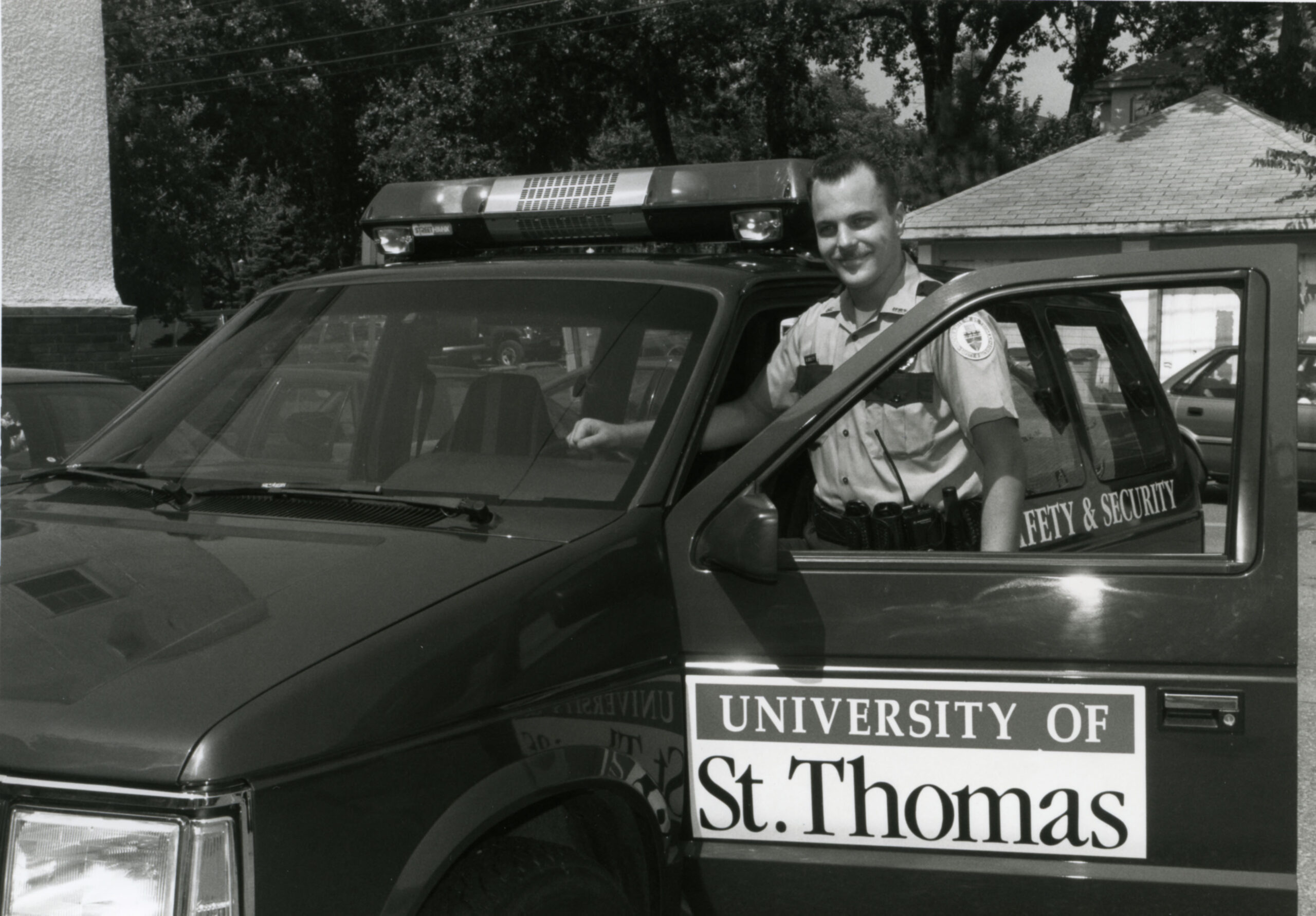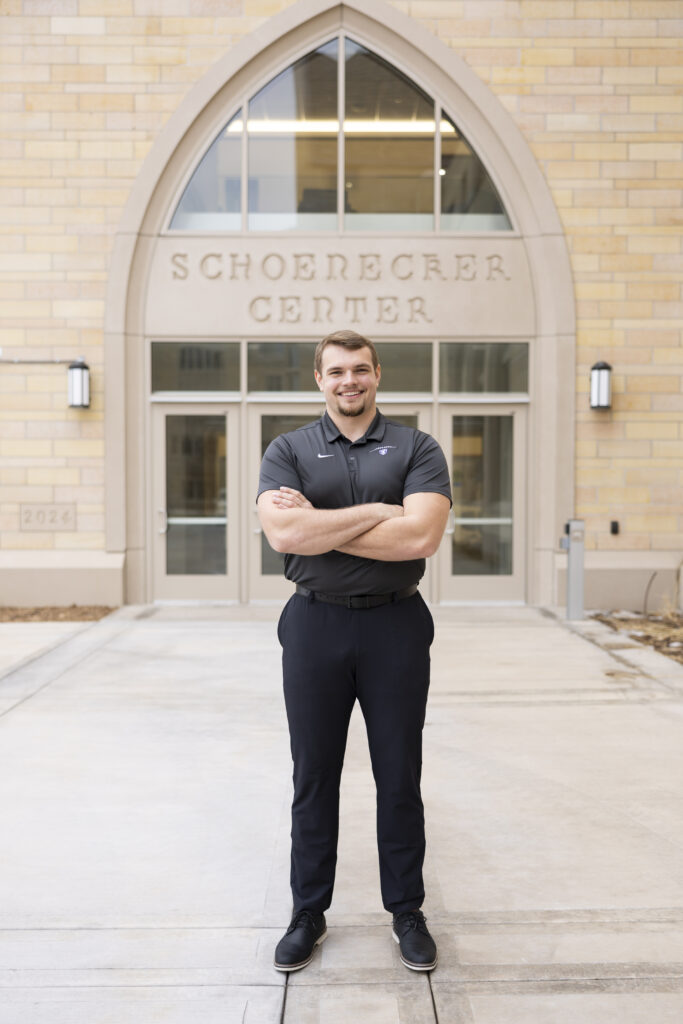Every day, encounters with the Public Safety officers at St. Thomas span a wide spectrum, from routine tasks such as jump-starting a car to handling urgent situations like medical emergencies or theft reports. Over the years, the duties of these officers have undergone significant evolution, mirroring the growth and changing needs of the university.
The origin of the Public Safety Department at St. Thomas can be traced back to the institution’s start in 1885 when a night watchman was employed to uphold basic security measures. The duties included checking locked doors and vigilance against the ever-present threat of fires.
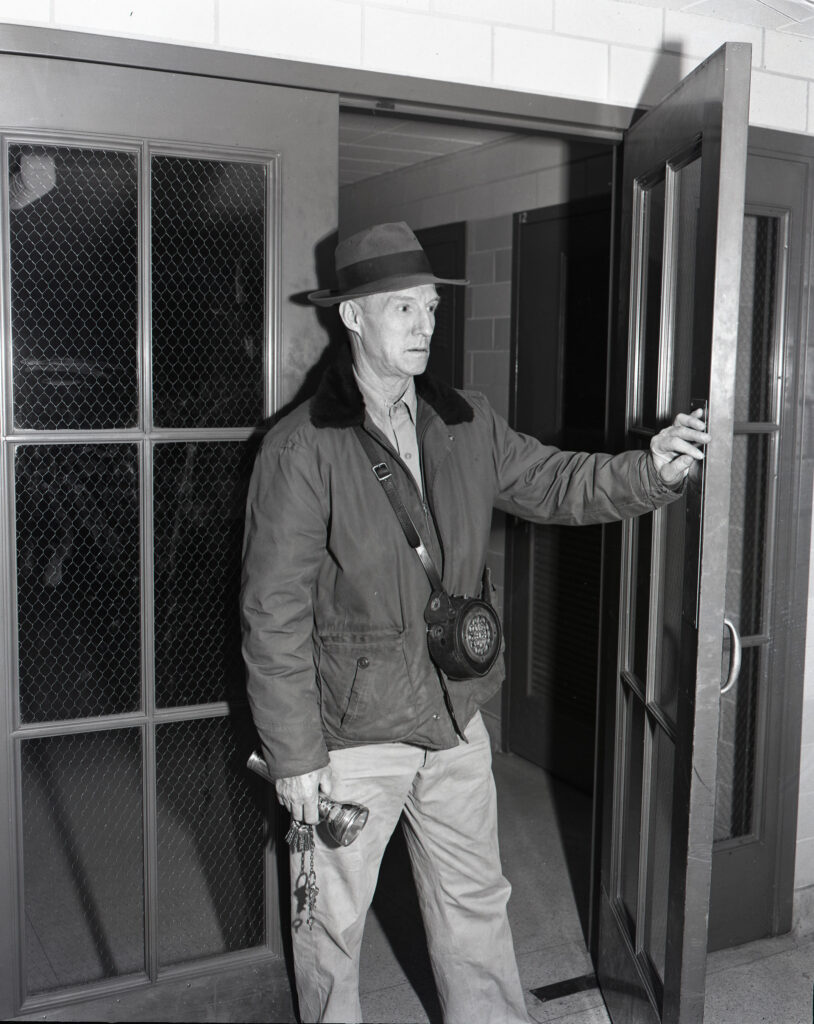
By the 1950s, the responsibilities of the night watchmen expanded as they patrolled each of the university’s 12 buildings every three hours. With them, they carried a punch clock and “punched” 28 clocks during each round to provide written “testimony” that they had in fact gone through each of the buildings. However, it wasn’t until the summer of 1966 that the transition to a more comprehensive security force began, marked by the recruitment of staff from Midwest Patrol Service to “maintain law and order on campus.”
As the university community continued to grow, so did the need for enhanced security measures. By 1977, the Campus Security Department had evolved into a team of six officers managed by the Facilities Department. Operating from a small office in Murray Hall, their primary focus remained safeguarding campus facilities, with one officer per shift dedicated to building security.
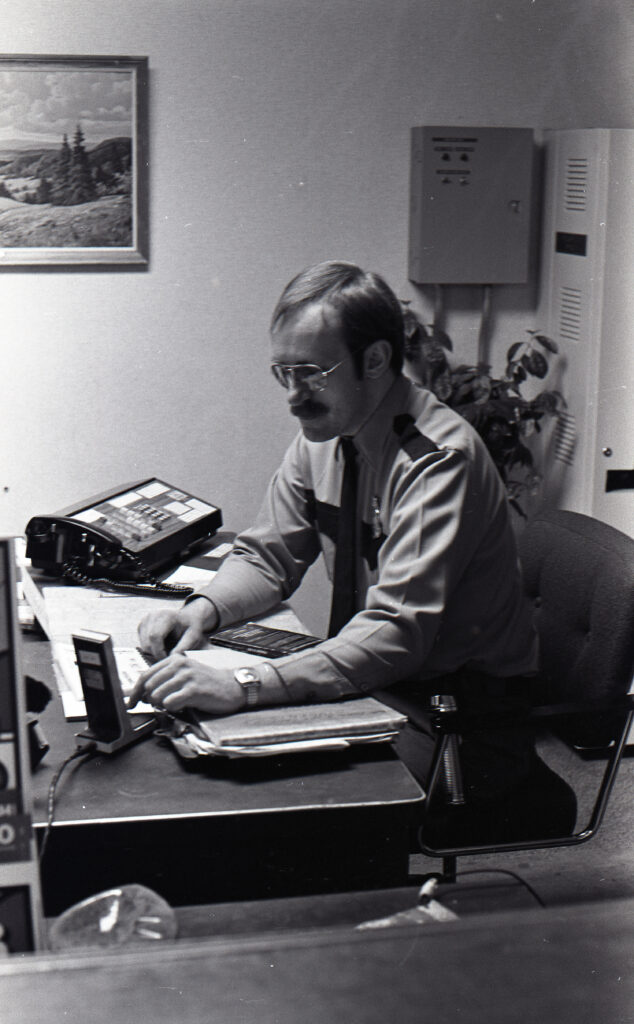
The 1980s ushered in discussions on campus about the restructuring of campus security. Increased student residency on campus highlighted the necessity for specialized training and response to public safety incidents. In response to these concerns and to new federal regulations, initiatives such as emergency call boxes, a 24-hour escort service, and mandatory ID card access to buildings after hours were implemented.
In 1989, the Safety and Security Department emerged as a distinct entity from the Facilities Department, relocating its offices to 2097 Grand Ave. by 1990. With the establishment of the Minneapolis campus in 1992, the department expanded its oversight to include monitoring responsibilities for the new campus.
Acknowledging the dynamic nature of its responsibilities, the department underwent a name change in 1998, becoming the Public Safety and Parking Services Department. This transformation reflected an expanded scope of services, including incorporating responsibilities for investigations and alarm systems. The relocation to Morrison Hall accompanied this change, offering a centralized hub for operations.
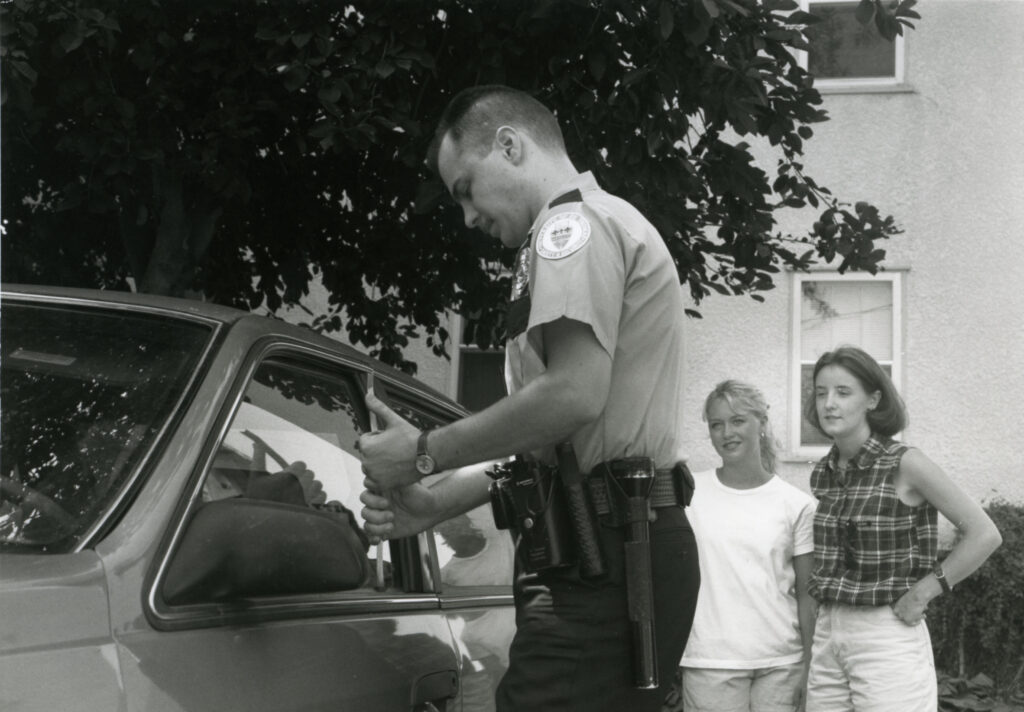
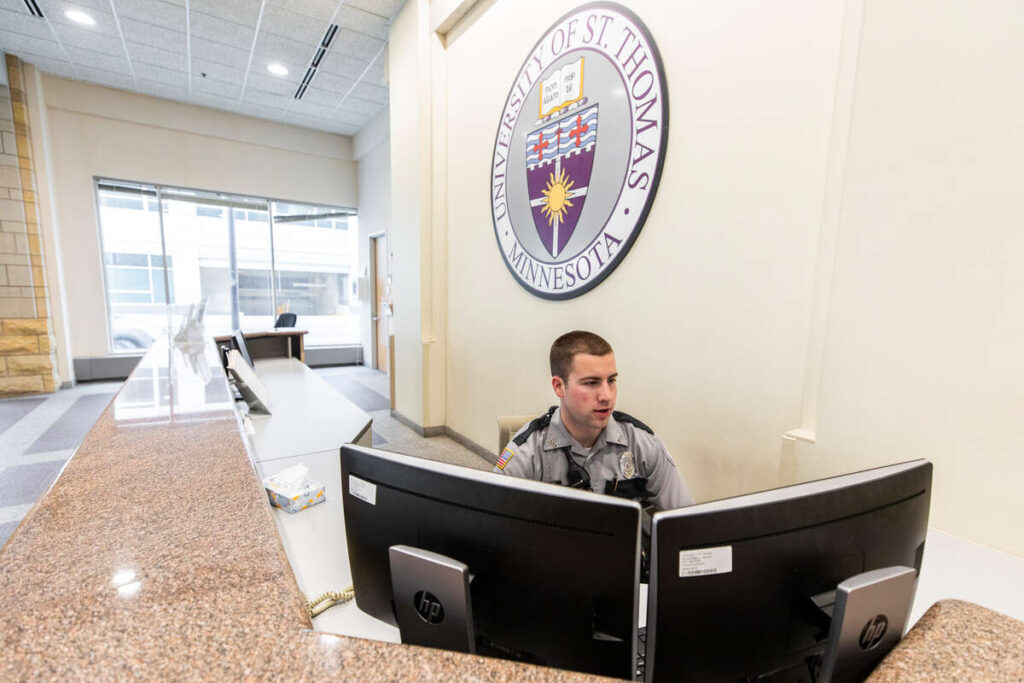
In 2006, the establishment of a satellite Parking Services Office allowed for a more streamlined approach to parking operations, further enhancing campus safety initiatives.
Numerous changes to the department occurred in 2023. Parking Services separated into its own department called Transportation Services. Due to the transition to Division I athletics, Public Safety created an emergency manager position. In addition, after more than 30 years of wearing the same uniform, a new uniform for Public Safety employees was introduced.
As of January 2024, Public Safety officers were issued body cams. This new technology expands camera coverage already in use around campus, particularly in residence hall facilities, to aid in keeping the campus community safe and investigating incidents.
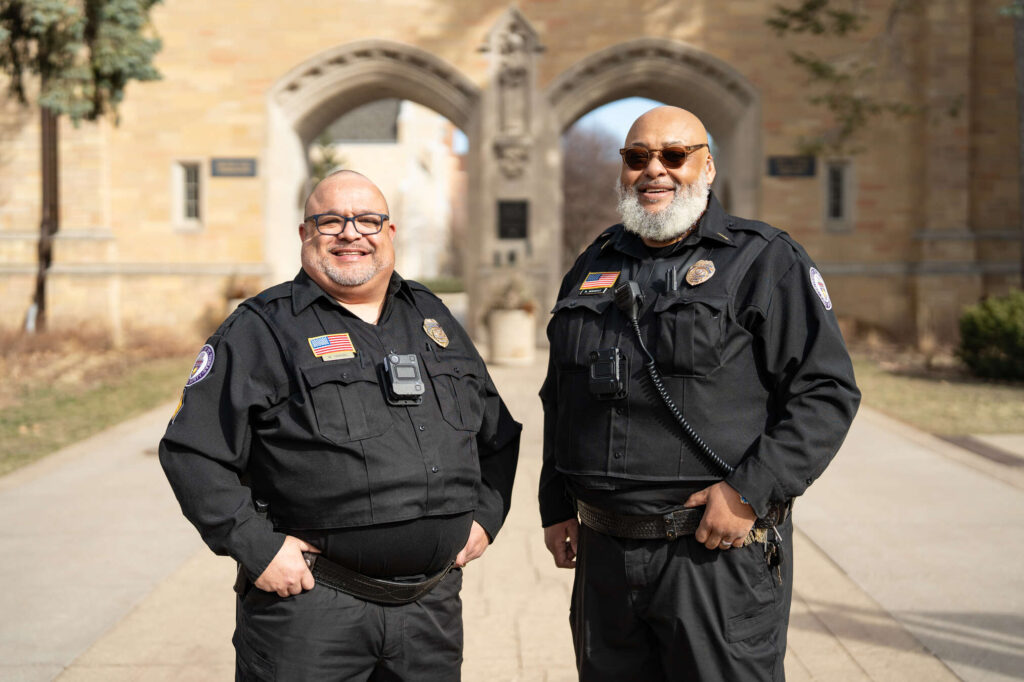
Today, the Public Safety Department at St. Thomas boasts a team of 40 employees, committed to ensuring the safety and security of the university community. From its humble beginnings with a night watchman to its current multifaceted structure, the evolution of public safety at St. Thomas reflects a commitment to adaptability and growth in response to the ever-changing needs of the campus community.
More Tales from the Archives
-
Tales from the Archives: The Bells of St. Thomas
People & Culture -
Tales from the Archives: Homes for the Arts and Sciences
St. Thomas 2025 - Lead in STEAM Education -
Tales from the Archives: Christmas Choral Music at St. Thomas
People & Culture -
Tales from the Archives: Football Coach Ed Rogers
People & Culture
